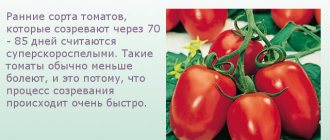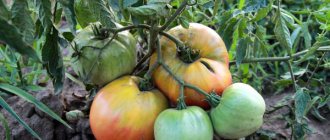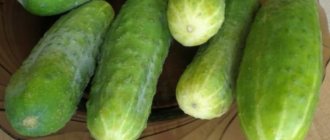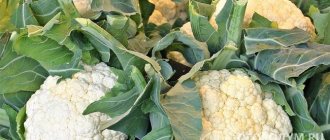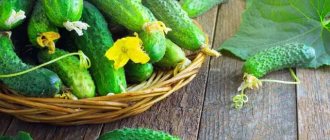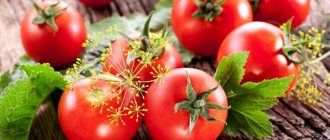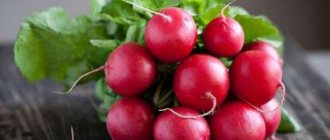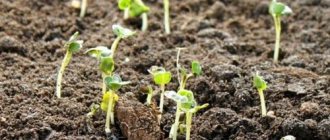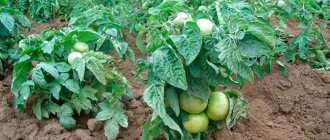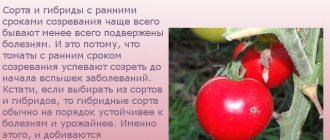Crispy radishes grow in almost every garden. This spring vegetable appears very first to please gardeners with its light spice and abundance of vitamins. And if you sow radishes in a greenhouse, they will grow even earlier. But for such cultivation there are certain varieties of radishes for greenhouses. There are many classifications - from radishes with early ripening to vegetables with unusual shades.
Radish varieties for greenhouses
What varieties of radish are best to plant in a greenhouse?
Most vegetable growers want to get a good harvest of large radishes with high marketability and taste in the shortest possible time. But growing conditions can dictate their own rules. Root crops will have to grow in low light conditions, in conditions of high humidity, sharp changes in day and night temperatures, characteristic of early spring and autumn months.
The best radish varieties for a greenhouse have the following characteristics:
- early and friendly terms of ripening;
- plant resistance to bolting and premature flowering, which is often caused by high air temperatures;
- immunity to fungal diseases, the development of which is promoted by high humidity;
- shade tolerance;
- cold resistance.
Naturally, the radishes should be dense and crispy. Do not crack or form internal voids and can be stored for a long time. Well, everyone has different tastes.
Harvest
Radish is a truly unique plant, in which not only juicy and tasty roots are eaten, but also the stem and leaves. You can brew tea from greens or make a delicious salad. It is necessary to dig up ripe root vegetables with a hoe, being careful not to damage the radishes. The harvested crop usually does not have good shelf life, so it should be eaten or processed literally within a month.
A variety of radish varieties for growing in greenhouses
The range of radish seeds on the market is huge. When choosing, initial attention is paid to the characteristics and agricultural technology of cultivation. Preference is given to varieties and hybrids whose properties are suitable for greenhouse conditions.
They also pay close attention to ripening time, yield, and declared taste qualities. And only then choose the variety you like, based on the shape and color of the root crops.
Productive varieties of radishes for a polycarbonate greenhouse
Yield varieties of radishes are considered to be those that produce more than 3-3.5 kg/sq.
- Radish Firstborn F1 is characterized by high yield and early ripening. With proper care, 1 m2 can produce up to 3.5 kg of large, round root vegetables weighing from 25 to 35 grams. The skin color is dark red. The taste of radishes is excellent. The pulp is dense, juicy and sweet. The variety is resistant to bolting and flowering. The first fruits can be tasted 16-20 days after germination.
- Ilke radish is a variety suitable for growing in conditions of high humidity and temperature. Thanks to its resistance to bolting and cracking, from 1 square of area you can get up to 3.6 kg of bright red round root vegetables with white flesh that has a slight pungency. A variety with average, about 25-28 days, ripening periods.
- Rhodes radishes have an excellent taste. Its dense, pinkish flesh combines juiciness and moderate pungency. No bitterness. The root vegetables are round, have a beautiful crimson hue, and are large enough for an early-ripening variety. They reach 4-5 cm in diameter. They are durable and tolerate transportation well. 3.2-3.4 kg of vegetables are harvested from one square.
- Camelot radish produces beautiful spherical cherry-colored fruits weighing up to 30 grams. It reaches technical maturity 20-22 days after germination, biological maturity – after another week. The pulp is somewhat oily, delicate in taste, slightly spicy. Productivity is from 3 to 3.5 kg per 1 m².
Large-fruited radish varieties for the greenhouse
Varieties with large root crops are best grown in open ground. Few of them tolerate shade well. They are also demanding when it comes to watering. They are distinguished by late ripening or long-term fruiting. If you sow large-fruited radish seeds in a greenhouse, do so in early spring.
- Rubin radish is one of the few varieties that reaches its maximum size in 1 month. The fruits are round, slightly flattened on the sides, up to 5-7 cm in diameter and weighing up to 30-35 grams. The taste is high. The root vegetables are sweet, juicy and medium spicy . Among the disadvantages, vegetable growers note a short storage period.
- Red giant radish with roots of crimson color and conical shape, grows up to 8-10 cm in length. It bears fruit for a long time, for 2-3 weeks, gradually gaining weight up to 150 grams. Reviews about it are the most positive. The pulp is dense, pinkish, juicy, sweet-spicy. Stored for 3 months.
- Ascania is one of the amazing and versatile varieties. Ripens within 23-25 days. Then it begins to gain mass. At the stage of biological maturity, the diameter of bright red root vegetables reaches 10 cm. They are distinguished by a balanced taste and long shelf life.
Development control
The main task of the gardener is to promptly create the microclimate that is optimal for growing radishes in each time period. The seeds are planted in soil heated to 12°C. After planting, make sure that the air in the greenhouse warms up to 16°C. With the appearance of the first shoots, intensive ventilation is provided: the atmospheric temperature is set at 6o C. On the fifth - seventh day, the greenhouse is covered: the plants are provided with comfortable thermal conditions - 18 - 20o - for the period of molting and further development.
It is necessary to control the density of seedlings. Thickening can lead to a significant reduction in fruit weight, and in some cases, to their absence. But the planted plants are not prone to the formation of arrows.
At first, water the crop no more than once every three days, while making sure that there is no waterlogging - the fruits may crack. Excessive amounts of water can provoke the development of the disease - blackleg. Moisture retention and mulching are effective procedures: humus and peat are laid in a layer of up to 1 cm.
The beds are regularly loosened, giving oxygen access to the root system. If the soil is prepared in advance, the seedlings are not fertilized; in extreme cases, when the development is low, the radishes are fed with nitrogenous substances. Harvesting begins when the fruit size is 2 cm.
Disease treatment
Growing radishes in a greenhouse is associated with certain difficulties, the main of which are diseases. The most common diseases are: blackleg, dry rot, powdery mildew. There are few ways to treat plants: the main one is prevention. Treatment of crops with insecticides is not allowed. In some cases, the fruits are sprayed with a weak solution of copper sulfate. The seed material is subjected to hardening procedures: heated in a water bath at 50°C, then cooled in a 10°C liquid. Often you have to take the extreme measure of replacing the soil: thanks to its timely implementation, it is possible to grow a sufficient harvest of radishes. To prevent the occurrence of fungal diseases, you need to keep the area clean and plant strong varieties.
propolikarbonat.ru
Dutch radish varieties for greenhouses
Seeds from Holland have always been popular among gardeners. They are characterized by good resistance to temperature changes and moisture deficiency. Among them there are also those that are excellent for growing in greenhouses.
- Radish Rover has been known to gardeners for a long time. It ripens in 20-25 days. Medium-sized ruby roots, spherical in shape, delight with a fresh and delicate taste without the slightest sign of bitterness. The yield of the variety is also high. The variety does not shoot, is not prone to premature flowering, and has good yield. Up to 3 kg of root vegetables are harvested from 1 m².
Stelar F1 (Stellar F1) (Syngenta)
Photo of radish Stelar F1 (Stellar F1)
Early ripening high-quality radish for growing in film greenhouses, temporary shelters and open ground. The growing season is 23-25 days.
Root vegetables are spherical in shape with an intense red color. The pulp is snow-white, very juicy and crispy.
A plant with short leaf apparatus, the leaves are erect, which speeds up harvesting. Resistant to yellowing of the tops, withstands low light conditions well.
Radish Stelar F1 (Stellar F1) forms perfectly aligned fruits with a rich color that is not lost after washing. Retains its color for a long time after cleaning.
Long radish varieties for greenhouses
Breeders are pleased with the varieties of long-fruited radishes. Many chefs like it for its large size and ease of cutting when preparing snacks and decorating dishes.
- The autumn giant really does look like a giant. Smooth, white, oval-shaped root vegetables reach a length of 6-8 cm, and have a cut diameter of about 4-5 cm. The weight of such radishes can reach 150-170 grams. In addition, the variety has good taste, medium ripening time and excellent yield. According to reviews, this variety of radish for greenhouses allows you to harvest up to 10-15 kg of vegetables from 1 m².
- The Ice Icicle variety will be appreciated by fans of spicy radishes. Root vegetables really look like icicles: white, elongated conical shape. The small diameter of the root crops and compact leaf rosettes allow you to sow seeds densely and obtain good yields. You just have to remember that the variety is late-ripening, with a ripening period of 30-35 days.
- Aries radish is characterized by a delicate, sweetish taste. The fruits are bright pink, regular cylindrical in shape with a rounded white nose. The weight of one root crop is up to 30 grams. Cut into thin slices, it will look good as a decoration for culinary dishes, giving them spring freshness and a slight piquancy.
Hybrid radish varieties for greenhouses
Gardeners are wary of hybrid varieties of vegetables. However, these radish varieties are often the best for growing in polycarbonate greenhouses. They combine good yield, early maturity and disease resistance.
- Radish Alex F1 , according to reviews, is not afraid of light shade. Namely, it is often the cause of failures when growing root crops, especially in early spring. The variety is ultra-early ripening. Fresh vegetables with a delicate sweet taste can be served within 16-18 days after germination. The root vegetables are medium, weighing about 15-20 grams. Round shape and crimson color.
- Original hybrid Confetti F1 from breeders from Siberia. Neat, round root vegetables with a sweet taste and different colors. Among them it is easy to find white, red, purple, and yellow. Radishes are ideal for table setting and kids love them. The fruiting period is extended and lasts about 20 days.
- The pink barrel ripens in 20-25 days. Produces round, slightly elongated fruits. It got its name for its unique, unusual pink-violet hue. The pulp is white, dense, without cracks or voids. It tastes juicy, tender, with spicy notes.
Attention! Hybrids are created in the laboratory, and they get all their qualities there. Therefore, you should not prepare seeds of these varieties yourself. They will not retain their characteristics.
Polonaise (Duo) (Moravoseed)
Harvest radish Polonaise (Duo)
A universal variety of radish for growing in different types of greenhouses and open ground in spring and autumn. The growing season lasts 29-33 days.
The roots are round in shape, with a good transition from red to white at the bottom. The pulp is white, tender in taste, without voids.
The plant forms a compact leaf apparatus that is well attached to the root crop.
The advantages of the variety for the greenhouse Polonaise (Duo) are its excellent taste, resistance to bolting, wilting and cracking.
Radish varieties for greenhouses with original fruit color
Everyone has long been accustomed to the fact that radishes are red, pink or crimson. But today breeders delight fans of this vegetable with colorful varieties.
White
White colored varieties have actually been grown for at least 30 years. However, they began to be in demand only in recent years. Their main difference is not only in color, but in a softer taste, without excessive sharpness and harshness.
- Mokhovsky radish for its good yield and fast ripening time, up to 28 days. The high taste and commercial characteristics of root crops are also noted. They are distinguished by dense, snow-white flesh and excellent piquant taste. Stored in the refrigerator for up to 2 months without signs of flabby or wilting.
- Radish Snezka with excellent taste is resistant to flowering and fungal diseases. The fruits enter the stage of technical maturity on the 20th day after seed germination. Full ripening occurs within 2-3 weeks. Radishes are flat-round in shape, weighing from 20 to 30 grams. Valued for its high content of vitamins and microelements.
- Odysseus produces smooth cylindrical fruits weighing 17-20 grams. Grows up to 12-13 cm in length. It has a refreshing taste, without excessive sharpness and bitterness. Root vegetables are stored well in a cool room. Long distance transportation is possible.
Radish varieties for greenhouses for sowing in summer and autumn
To plant radishes in a greenhouse in the spring, select varieties that are distinguished by early ripening, cold resistance and shade tolerance. On the one hand, vegetable growers want to get a harvest of fresh vegetables in the shortest possible time, on the other hand, there is still little sun in early spring, and the air temperature can fluctuate sharply. It is worth noting the following varieties: Alex F1, Globus F1, Gaspar, Violetta, Confetti F1.
In autumn, radishes are grown mainly for storage. Suitable varieties for this purpose: Red and Autumn Giant, Dungansky 12/8, Odyssey, Wurzburgsky 59.
How to choose the right radish seeds for a greenhouse
When choosing radish seeds for a greenhouse, pay attention to the following points:
- Terms of ripening. Radishes are planted in a greenhouse before planting or after harvesting the main vegetables. In spring it is worth giving preference to early varieties. In autumn, the choice depends on climatic conditions. If there are 1-1.5 months before the onset of cold weather, it is better to give preference to mid-season varieties. They last longer.
- You should not believe promises that root vegetables will ripen within 15-18 days. It is not possible to create ideal conditions in a greenhouse. If you plan to use the greenhouse later for growing other vegetables, choose early-ripening and frost-resistant varieties. They are sown in early April.
- Preference is given to varieties that can be grown throughout the summer. Most likely, even in a greenhouse they will not sprout when the temperature rises.
- Pay attention to the dimensions of the leaf rosette. It is important that the plants do not shade or interfere with each other. Radishes with compact, erect rosettes and small leaves are suitable for greenhouses.
Soil preparation
If something was already growing in the greenhouse in the previous season, mandatory preparation is required. After all, the soil is significantly depleted by the previous “tenants” (tomatoes, cucumbers or herbs). To provide future radishes with proper care, the soil requires replenishment of nutrients.
To prepare you will need:
- remove all remnants of roots and branches from previous plantings;
- dig up the bed, adding 3 kg each. humus per 1 sq. m. area;
- It is also recommended to feed the soil with ash (0.5 cups) or potassium sulfate mixed with urea and superphosphate (1 tablespoon of each preparation).
After the soil is ready, it is leveled with a rake and shallow grooves are made at a distance of 10 cm from each other.
Prices for potassium sulfate
Potassium sulfate
